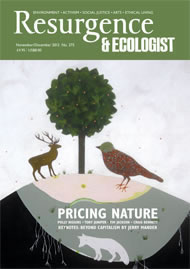I first heard about David Gascoyne from a radio programme that told how, in 1973, while he was institutionalised, a volunteer called Judy Lewis read out a poem by, she said, a poet who was long dead. After the session, Gascoyne thanked her for reading his poem September Sun: 1947 so beautifully. Initially disbelieving, she checked and discovered that he was indeed still alive. They became friends, later married, and she became a restorative influence in Gascoyne’s life, helping him produce new work and rehabilitating his reputation, now further enhanced by this wonderful biography by Robert Fraser.
Fraser rightly shreds the chauvinistic legend that David alone benefited from this union: Judy Gascoyne found great love and companionship from this spiritual and caring individual who was one of the leading cultural figures of the age.
My first reaction upon reading Night Thoughts was: what a life! Gascoyne met everyone of any cultural importance; major names spring off every page, winding their way around his journey through creativity, depression, despair and madness to joyful poetic power and reflection. Steeped in music since being a chorister at Salisbury Cathedral, he rebelled against a miserable London schooling by seeking refuge in Charing Cross bookshops and meeting the poets and publishers of the literary milieu of 1930s London.
Using the proceeds from his first publication, in 1933 Gascoyne visited Paris, where he connected with the surrealist movement, becoming one of Europe’s leading surrealist poets and bringing the work of Eluard and Dali to London, as well as navigating the personality clashes of this influential, fiery bunch.
During the war, he spent time acting in a touring theatre company. These years seem to have been unhappy, despite several publications, most notably a collection illustrated by Graham Sutherland (Poems 1937–42), and a growing appreciation amongst writers and publishers. His addiction to painkillers contributed to a steady decline, and the first of several periods of institutionalisation began.
Perhaps Gascoyne’s greatest single piece is Night Thoughts (1956), written for radio, which travels from a Megalometropolis through to a true Encounter with Silence. A soaring work, it reminds me of Samuel Beckett and John Donne, amongst others:
“Night music of mysterious hazard. Dream fugues: variations on fortuitous themes; intricate tracery unwinding like designs drawn in a trance across the taut sky of the universal ear.”
One of Gascoyne’s greatest champions was Enitharmon Press, founded in 1967 by Alan Clodd, then run by Stephen Stuart-Smith. Clodd met Gascoyne through his long-time friend Kathleen Raine, an outstanding poet of the divine. This relationship provided an outlet for his poetry, translations, articles, collected writings and reprints up until his death in November 2011. Raine also introduced Gascoyne to Satish Kumar in 1985, and Resurgence played a valuable part in Gascoyne’s exposition of his inner world, publishing him many times.
Delving so deeply into this poet’s life, I finished the book knowing that Gascoyne lived richly, through sublime connection and agonising isolation, and gives much inspiration to artists of any genre. His spiritual questing was pure and grittily honest.
Fraser’s portrait is often so painfully intimate that sometimes I longed to have Gascoyne’s poetry to explore instead of his daily minutiae. Despite being tricky to track down (Bristol library had a Collected Poems in its reserve), and second-hand copies being expensive, there is an online presence, and some audio recordings are available. I certainly recommend having a volume of Gascoyne’s writings side by side with Fraser’s epic (469 pages) biography.
Night Thoughts, then, is an enriching biography of an inspirational poet whose work continues to infuse light and knowledge into the world.







